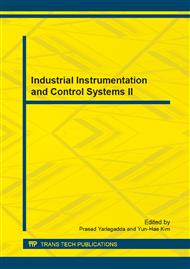p.1211
p.1217
p.1225
p.1229
p.1234
p.1241
p.1245
p.1250
p.1256
Research for Cornering Gearshift Strategy of Automatic Transmission Vehicles Based on Fuzzy Inference
Abstract:
Undesired gearshift often occurred when the vehicle was under the curve driving condition. To resolve this problem, this paper proposed a fuzzy correction gearshift strategy under cornering which put the lateral acceleration and lateral acceleration variation rate, the external load and the real-time vehicle speed as parameters. Road test results showed that the undesired gear shift frequency was largely reduced and this method improved driving comfort and security under cornering condition.
Info:
Periodical:
Pages:
1234-1240
Citation:
Online since:
July 2013
Authors:
Price:
Сopyright:
© 2013 Trans Tech Publications Ltd. All Rights Reserved
Share:
Citation:


